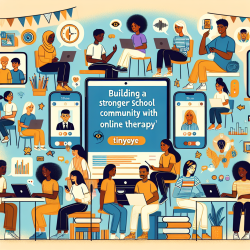Introduction
In the ever-evolving landscape of education, identifying and supporting children with reading difficulties is a critical mission. Recent advancements in technology and research have provided us with innovative tools to aid this cause. One such tool is the ReadFree tool, a computerized battery of tasks designed to identify poor readers, including minority-language children (MLC), through a machine learning approach. This blog explores how practitioners can leverage the insights from the study "The ReadFree tool for the identification of poor readers: a validation study based on a machine learning approach in monolingual and minority-language children" to enhance their practice and create better outcomes for children.
The Power of the ReadFree Tool
The ReadFree tool stands out due to its ability to minimize language processing, making it an effective tool for both monolingual and bilingual students. By focusing on cognitive markers such as executive functions and timing skills, it provides a comprehensive assessment that transcends linguistic barriers.
The study validated the tool using a sample of 142 Italian-monolingual participants, divided into monolingual poor readers and good readers. The Classification and Regression Tree (CART) model identified auditory go-no/go (regular), Rapid Automatized Naming (RAN), and Entrainment100bpm as the most discriminant tasks, achieving an accuracy of 86% for monolinguals and 76% for MLC.
Implications for Practitioners
For practitioners, the ReadFree tool offers a data-driven approach to identifying reading difficulties. Here’s how you can integrate the findings into your practice:
- Embrace Multimodal Assessment: Utilize the ReadFree tool's tasks to assess cognitive markers beyond traditional reading tests. This approach can help identify underlying deficits that may not be apparent through standard assessments.
- Focus on Executive Functions: The study highlights the role of executive functions in reading difficulties. Incorporate activities that enhance these skills, such as tasks that require inhibition and attention control, into your interventions.
- Consider Timing Skills: Timing skills, as measured by tasks like Entrainment100bpm, are crucial. Incorporate rhythm-based activities that can aid in developing these skills, potentially improving reading fluency.
Encouraging Further Research
While the ReadFree tool provides a promising framework, further research is essential to refine its application across diverse populations. Practitioners are encouraged to contribute to this body of research by:
- Conducting Longitudinal Studies: Follow students over time to assess the long-term impact of interventions informed by the ReadFree tool.
- Exploring Cross-Cultural Applications: Investigate the tool's efficacy in different cultural contexts to ensure its broad applicability.
Conclusion
The ReadFree tool represents a significant step forward in the assessment of reading difficulties. By focusing on cognitive markers and utilizing machine learning, it offers a robust framework for identifying and supporting children at risk of reading disorders. Practitioners are encouraged to integrate these insights into their practice, fostering an environment where every child can thrive.
To read the original research paper, please follow this link: The ReadFree tool for the identification of poor readers: a validation study based on a machine learning approach in monolingual and minority-language children.










